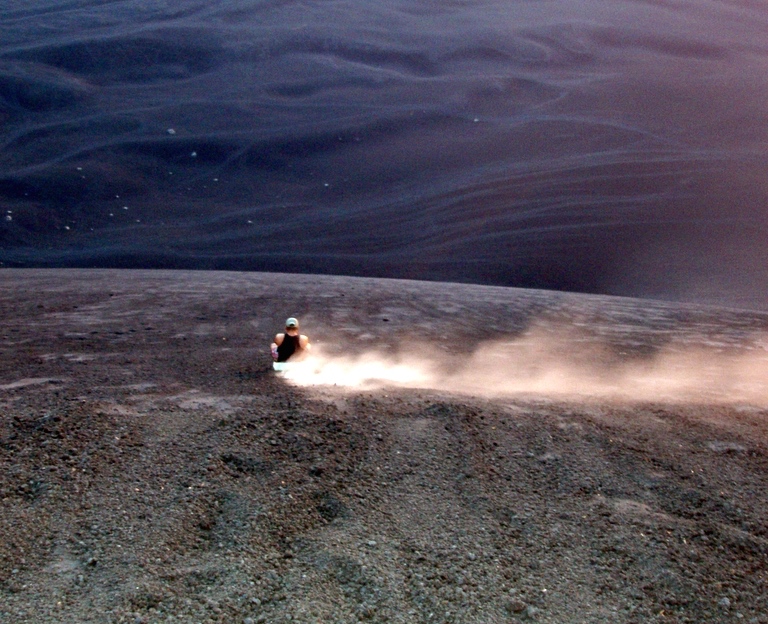Humankind is remarkable. Over and over again we have proven our ability to adapt, to take what the Earth has given us and make it work for our benefit. We have used mass extinctions of a million years ago to fuel a walk on the moon. We have replicated the bolts that strike down from the sky and given ourselves microwavable popcorn. Our greatest trick, taking the breakdown of organic materials and turning it into alcohol, was also one of our first. Sometimes we go too far, but this is not one of those times. Volcano boarding is the next feat of human ingenuity, taking a world forming force, and joyously sledding down it. You may have seen it before in some promo for some travel show, but now's your chance to get the low down on what Volcano boarding is, and how to go about doing it.
To the Volcano!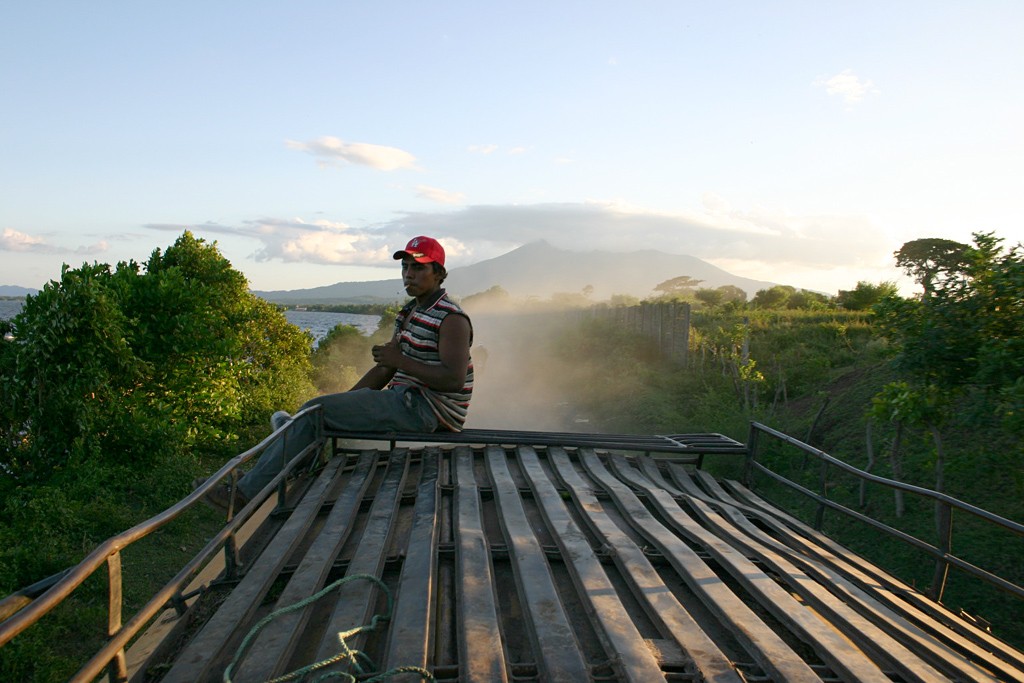
First, and perhaps most importantly, you need to be in a place with volcanos. As you probably already know, most of the world’s volcanoes are located around the Pacific Rim. There are lots of countries with volcanoes, but not every volcano will work for this particular activity. You can’t just grab a board and head down Mt. Fuji. The Japanese Cultural Board probably wouldn’t be too pleased with that. In order to volcano board you need a fine ash that the board can smoothly travel across. It’s also preferable for there not to be an ungodly hot stream of molten lava flowing down with you too.

They're only going for a hike. You can see the jealousy from here.
The most popular destination with an already established volcano boarding tour industry is Nicaragua. Considering that you need protective equipment, that these are active volcanoes, and that this is a somewhat risky activity, you definitely want to go with a tour. Luckily, they’re cheap. Oh hey, look at that, Project Expedition has one that’s only $31 (and it comes with two alcoholic beverages). Using that tour as an example, you start in Leon, Nicaragua, the second biggest city in Nicaragua and a place filled with gorgeous colonial architecture and access to the beautiful landscape that surrounds it. From there you head to Cerro Fuego, a volcano that is just a brief 45 minute drive through the Nicaraguan countryside away. What Goes Up Must Come Down
As we finish up the overview of volcano boarding and head straight into the specifics of experience itself, we’ll stick with using the Cerro Negro volcano boarding experience as our example. This actually works quite well, because there aren’t really a lot of volcanoes in the world that offer this experience and Cerro Negro (which, by the way, means Black Hill in Spanish) is one of the best places to get acquainted with it. The volcano itself is actually the youngest in Central America, forming in April of 1850. It is still active (exciting!), with its last eruption happening 16 years ago in 1999, and it’s about 2,388 feet in height. Yes, you’ll have to hike up that. It only takes about 45 minutes to get up to the spot from which you’ll eventually descend. You are standing on a black rock, so it could get quite hot, but the breeze as you ascend will definitely help out in that department. 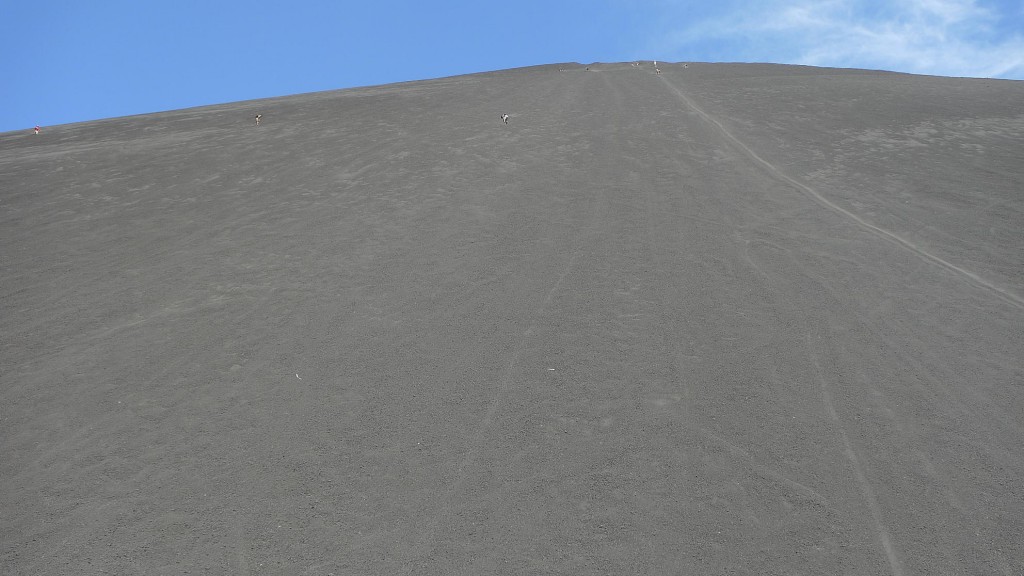
You'll soon be one of those specks. Yeah, those are people.
Once you reach the spot and ready yourself for the trip back down, there are some things you should be prepared for. The cult-friendly one piece suit you’ll don is for your own good. Even though the rocks are small, they can still be sharp enough to break through both clothes and skin. You’ll also be given gloves and protective goggles, so you’ll feel just like that time you went as Walter White for Halloween. You should also familiarize yourself with the sled. It’s basically a wooden sled with a rope tied to the front to hold as you lean back, but with a metal layer glued to the bottom to help sail over the rocks. The rope, meant for stability, isn’t much for steering. You’ll have to use your body for that. Now before you go down, take in the view. You’re on an active volcano. That’s amazing! Now let’s go sled down it. Leaving Them in the Dust
You may have noticed my word choice with that last bit up there. It’s called volcano boarding, why have I been using sled and sledding? Well, while standing up on the board and going down the mountain makes for a great promo, it doesn’t make for a great experience. With your weight evenly distributed between the front and the back of the board, you don’t gain as much speed, and it’s not like you can carve up volcano rock like you can a nice layer of fluffy snow. Instead, it’s better to use that board as a sled by plopping your butt down on the back of the board, grabbing the rope with both hands, and leaning back. Now that you’re lower to the ground, and all your weight is in the back, you’re going to go fast. It’s just science.
How fast you want to go is totally up to you (and your own terminal velocity). If you’re not an experienced sledder because you didn’t grow up living a Calvin and Hobbsian life in the cold winters of the North, there’s always a way to stop or slow yourself down. Just take your feet off the board and sink them into the ground. You’ll eventually come to a stop. You can gather some serious speed, you don’t have much steering, and rocks are hard, so just be aware of that as you bomb it down the hill. And by all means, give the boarding technique a try as well, maybe it'll suit you just fine. Again! Again!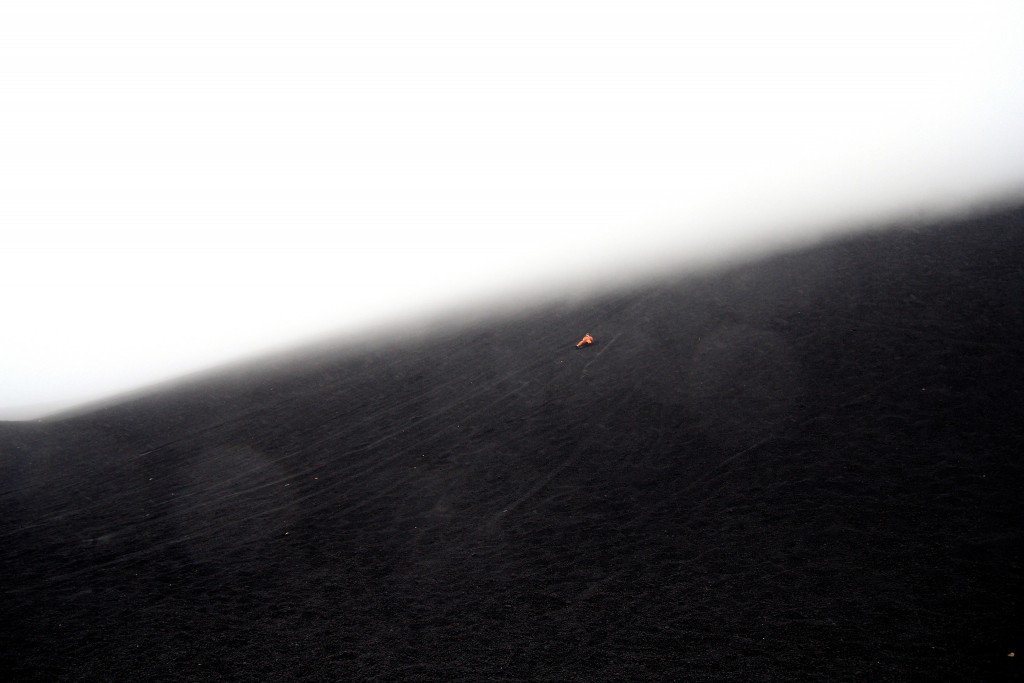
I think you can take it from here.
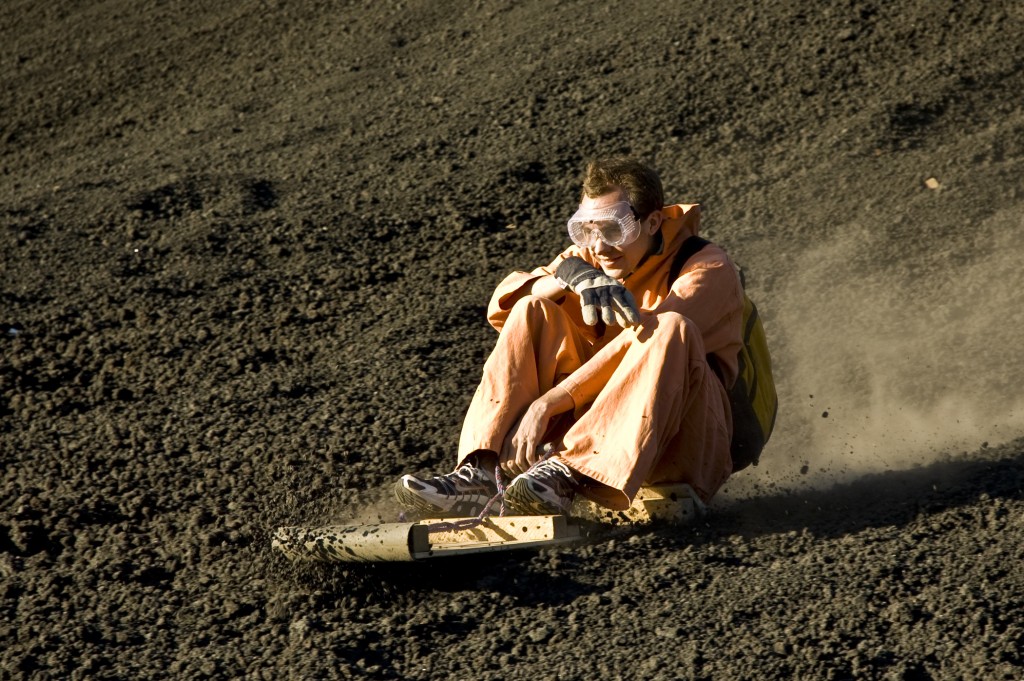

With the trip complete, like other daring adventurers before you, you have taken the brutal and unforgiving and made it into a ride unlike any other. What is next for you, and for humankind? I don't know about you, but I've always wondered what a cloud must feel like. Have you ever been volcano boarding? Any other unusual activities you know of? We'd love to hear about them. Send us an email, or even better, leave a comment!
Source for title image.

